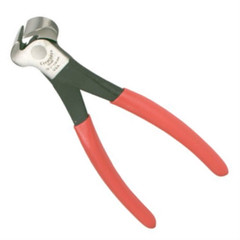Over the past several years I often find myself in conversations where the question of "What tools do you reccomend I buy first?" is asked by a new homeowner that's looking to get started on a DIY project or two. While everyone loves and expects me to list off a few good power tools (I'm talking a grunt as you use it, proud to own it, terrified it will hurt you if you misuse it, pure power tools), the most simple hand tools are often the ones that get the most use and abuse on a project and are my "go to" tools for building your toolbox.
Sure a power tool can make short work of an often difficult task, but back when our house was built 125 years ago, construction workers didn't have the convenience of on site power tools or plug in battery packs. When they had a screw to turn they used a manual screw driver, or a nail to drive, well, they used completely manually operated hammers.
From the look of our home's construction, the guys who built our house in the late 1880s made quite extensive use of these manually operated hammers. Why do I notice this? Because I'm finding and removing hundreds of cut head nails from all of the molding we've been removing to strip, restore, and rehang. Over the many years I've been working on this task, there's been no better way to remove nails from delicate molding than by using a trusty hand tool -- end cutting pliers.
This is one of those hand tools that comes to mind immediately when I imagine all of my must have tools. I didn't own one right away, and every time I had to pull a nail I found myself either trying to bang it through from the back of the wood and splintering the face, or I ended up damaging the surface by using prybars or the cat's paw to dig the nail out and get a good grip.
When I finally picked up the pair of Crescent End Cutting Pliers I own, it changed how I work on the house. Using these pliers, I'm able to grab nails to get a good grip, then gently rock the pliers in a way that gives enough torque to pull the nail free from the wood. They work when pulling nails through the wood from the back, as well as by grabbing their head to remove from the front. The width of the plier head spreads the force of the tool out so it doesn't damage the surface, and the pinch point of the tool is close enough to the end of the pliers to get those nails that are barely poking above the surface.
This tool has been critical in helping us to carefully remove sections of flooring without damaging surrounding boards. You almost always see these pliers (and my prybar) laying on the floor of any project I'm working on.
It's true, there are other tools built more specifically for the task of nail pulling, like these two nail pullers.
But I appreciate the multi-purpose use of the end cutting pliers. Beyond pulling nails I've used these to cut wire in difficult places, to get a good grip on small or difficult to handle items, and have even used it to cut through wood where I can't easily get a blade (it's not a clean cut, but you nibble your way through).
Though I'm intrigued by the other nail pullers, there's no way I'd give up my end cutting pliers on my list of indispensable and must have tools. From hardcore demolition and construction to the minor detail work of delicate molding nail removal, the role my end cutting pliers play is a very important one.
Do you have a favorite hand tool you're always singing the praises of? Something your toolbox would be incomplete without? Let us know some of your indispensable tools that you consider DIY must haves.
Did you enjoy reading this post? Want to learn more about our first-hand experiences with other tools, devices or items used throughout our renovation? If so, check out our complete list of product reviews in our Toolbox Tuesday section.
Note: We weren't paid for this review. We simply want to share good products when we see them, and hope that learning from our mistakes can help save you time, money and frustration.

![]()
![]()